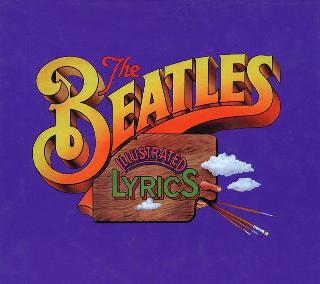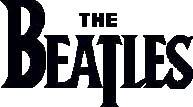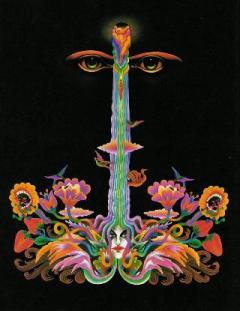Index
Home
Vorige
Tell Me What You See
Composer(s) : Lennon and McCartney
Year : 1965
Chords/Tabs: Tell Me What You See
Notes on "Tell Me What You See" (TMWYS)
KEY G Major
METER 4/4
FORM Intro -> Verse -> Verse -> Bridge -> Verse -> Bridge ->
Verse -> Outro (w/complete ending)
GENERAL POINTS OF INTEREST
Style and Form
- In context of some of the more innovative songs of the "Help!/Beatles
VI" era, this one is part of a small group of songs that might be
described as nice but non-blockbuster. Several by now
well-established Beatles trademark devices and novel touches are
apparent here at the detailed level; the larger than usual number of
cross-references and associations with other Beatles mentioned below
indeed seems to reflect this.
- Nonetheless, the overall mood and technique here are relatively simple
and straightforward. I'm sure there is at least one of my readers
who has been in love with this one since the first time s/he heard
it, and that's fine :-) Just remember, I did say it's
nice, didn't I ?
- On the surface, the form is yet again the familiar one of
two-bridges-but-no-solo, yet the verse section here is unusual in that
its second half sounds a bit like refrain; compare this with the
earlier example of "Thank You Girl". Even more
unusual is the way that a mini-solo is worked into the second half of
the bridge itself.
Melody and Harmony
- The song is clearly and unrelievedly in the key of G Major. A
recurring emphasis on the flat 7th scale degree (F natural) at
the beginning of each bridge lends some touch of the blues, but
compared to examples like "A Hard Day's Night"
or "Ticket To Ride", this one contains an
extremely mild dose it.
- The harmonic diet is very plain, being limited to the major chords of
G, C, and D (i.e., I, IV, and V). The G chord that opens the bridge with
an F natural in the melody actually functions as a V-of-IV, but
regardless of how you parse it, it's still a chord rooted on G.
- Harmonic rhythm is more varied in the service of formal articulation
and this somewhat makes up for the small number of chords.
Arrangement
- The prominent solo part for electric piano as well as the several
exotic percussion instruments which substitute during most of the
proceedings for the usual full drum kit provide quite a bit of novelty
to the backing track. This texture also turns the song into the most
strongly Latin-flavored of any Beatles original since the days of
"Ask Me Why" and "P.S. I Love
You".
- The vocal arrangement features two voices throughout, though the
two parts alternate frequently between phrases sung in harmony and
those sung at the unison or octave. To the extent that the words
communicate the kind of desire for loving union that will never accept
'no' for an answer in spite of all distance and other obstacles,
this device takes on an almost programmatic significance; the operative
phrase in this regard being "we will never be apart if I'm part of you."
- I definitely hear John in there for at least parts of the song, but
in some places, I have a hard time determining whether its the Two
of Them, or just Paul over-dubbed with himself.
SECTION-BY-SECTION WALKTHROUGH
Intro
- With just two measures of vamping on the I chord (G), the predominant
mood and texture is quickly established.
- The music starts a small instant before the downbeat and this subtle
gesture has a way of pulling you into the song as if by the hand, so
to speak. Compare this to "I'll Cry Instead" and
"The Night Before".
Verse
- The verse is sixteen measures long. Though it parses neatly, on one
level, into four phrases that are equal in length, the structure here
is more accurately described as two eight-measure couplets; the first
being verse-like and the second sounding more like a refrain, with its
suddenly slower harmonic rhythm and hook-phrase ending:
|G C |D G |G C |G |
G: I IV V I I IV I
|G C |D G |C D |G |
I IV V I IV V I
|C |G |C |G |
IV I IV I
|C |G |C D |G |
IV V IV V I
- The tune is distinguished by its opening with a dramatic upward leap
of an octave and its abundance of appoggiaturas. In terms of shape,
it gets rather obsessively stuck around the 5th scale degree (D) and
curiously contains no appearance of the 7th scale degree (F#).
- The opening line of the verse (and much else) is scanned so as to place
virtually all rhythmic emphasis off the beat. This nicely cuts across
the underlying smooth and steady backbeat.
- The vocal arrangement features two-part harmony in first two measures
of the first couplet (with John on the tune) but the remainder of this
section has them singing in unison.
Bridge
- The bridge is an even eight measures but its structure is unusual.
Only three of the four measures in the first phrase are sung, featuring
the title phrase declaimed as though it were a kind of categorical
imperative. This phrase is rounded out by a fanfare-like riff on
the electric piano (featuring a slow triplet, no less), and leads
to a second phrase that is entirely instrumental:
|G |- |C |- |
|G |D |G |- |
- Other sources of bridge-ly contrast here are the dramatically still
slower harmonic rhythm and the sudden appearance for the first time in
the song of the complete drum kit.
- A unifying connection with the music of the verses is found in the
continued high quotient of appoggiaturas and that leap upward at
the end of the piano solo; a sixth this time instead of an octave,
but the gesture still resonates with the tune's opening.
Outro
- The outro is a compressed variation of the bridge in which only
the first phrase is presented as modified so as to lead directly to a
complete ending.
- The surprise touch of humming without words here at the end had been
used to equally satisfying effect by John way back in "All I've Got
To Do."
- A peculiar loud amount of hiss can be heard right at the end on the
right channel, leading me to suspect that someone must have been caught
asleep at the sliding fader switch.
SOME FINAL THOUGHTS
- That the group had a longstanding sweet tooth for the Latin flavor in
their cover repertoire can be traced along a trajectory that runs from
"Besame Mucho" through "Mister Moonlight"
with several other examples coming in between. But you wouldn't
neccessarily say the same thing about their repertoire of original
songs, especially during the year or so that preceded our current
number.
- Granted, during much of '64 they could be seen as branching out into
unaccustomed styles and cross-blends, but the marked trends we've
noted are in the direction of first bluesy, and later folksy elements.
The turning here toward their erstwhile favored Latin beat is at first
glance a mildly shocking surprise, or even an anachronism.
- On another level though, you might say this also shows not only a
flexible versatility, but even a restless determination to keep trying
new things and not repeat themselves overmuch. In perspective of what
was first yet to come from them over the next several years, you might
call this otherwise simple song yet another clue to the one of several
new directions.
Regards,
Alan (awp@bitstream.com OR uunet!huxley!awp)
---
"Oh, you can come off it with us." 100592#67
---
Copyright (c) 1992 by Alan W. Pollack
All Rights Reserved
This article may be reproduced, retransmitted, redistributed and
otherwise propagated at will, provided that this notice remains
intact and in place.
Ook op Help!:
(c) 2024 Serge Girard


 (c) Alan Aldrigde, The Beatles Illustrated Lyrics
(c) Alan Aldrigde, The Beatles Illustrated Lyrics